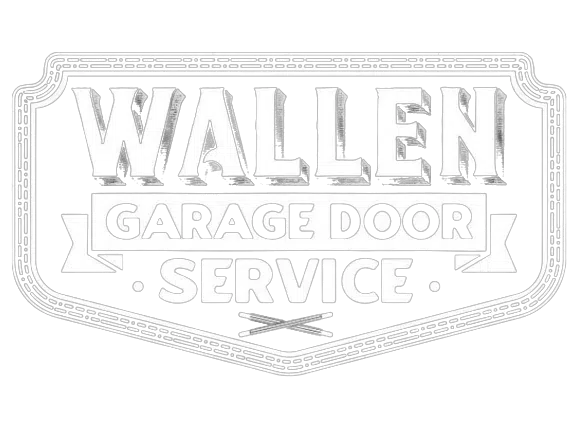How much does it cost to replace garage door springs? It’s a question that resonates with homeowners everywhere, especially when faced with the inconvenience of a malfunctioning garage door. Whether your door is creaking, sagging, or just not opening properly, understanding the financial aspect of spring replacement is paramount. So, let’s embark on a journey into the realm of garage door repairs, uncovering the intricate factors that shape the costs and arming you with the knowledge needed to navigate this essential home maintenance task.
Replacing garage door springs isn’t just about fixing a problem; it’s about ensuring the safety and functionality of one of the most frequently used entry points to your home. Before delving into the financial aspect, it’s vital to grasp why these springs are so crucial. Garage door springs bear the weight of the door, counterbalancing its mass and facilitating smooth opening and closing. Over time, these springs wear out due to constant tension and exposure to the elements, necessitating replacement.
Now, let’s get to the heart of the matter: the cost. It’s not a one-size-fits-all scenario; several factors come into play, influencing the final price tag. From the type of springs needed to the size and weight of your door, each element contributes to the overall expense. But fear not, for armed with the right information, you can make an informed decision that aligns with your budget and ensures the longevity of your garage door system.
Join us as we explore the nuanced world of garage door spring replacement, shedding light on average costs, DIY versus professional considerations, and crucial safety precautions. By the end of this journey, you’ll be equipped with the knowledge to tackle this essential home maintenance task with confidence and peace of mind.
Let’s roll up our sleeves and dive into the factors that shape the cost of replacing garage door springs.
Factors Affecting Cost

Types of Springs
Garage door systems typically rely on one of two types of springs: torsion springs or extension springs. Torsion springs are usually mounted horizontally above the garage door opening and wind up as the door closes, storing energy that is released to help lift the door when it opens. They are known for their durability and smoother operation. Most people agree that torsion springs are more dependable and durable than extension springs. On the other hand, extension springs are usually mounted vertically on the garage door’s two sides and expand when the door closes. Compared to torsion springs, extension springs tend to wear out more quickly and may need to be replaced more frequently, although being initially less expensive. It’s important to know what kind of spring your garage door system uses because it affects both how much a replacement will cost and how long your door will operate.
Door Size and Weight
The size and weight of your garage door play a significant role in determining the cost of spring replacement. Larger and heavier doors exert more force on the springs, requiring stronger and more durable components to maintain proper balance and functionality. Additionally, the dimensions of your door dictate the length and quantity of springs needed for replacement. It’s essential to accurately assess your door’s size and weight to ensure that the springs installed can effectively support and operate the door without strain. Failure to do so can result in premature wear and tear, leading to costly repairs down the line. Moreover, larger doors may require multiple springs to distribute the weight evenly, further impacting the overall cost of replacement.
Professional Labor Costs
While some homeowners may be tempted to tackle garage door spring replacement themselves to save money, hiring a professional technician is often the preferred choice for many. Professional labor costs can vary depending on factors such as geographic location, the complexity of the job, and the reputation of the service provider. While it may seem like a significant investment upfront, enlisting the services of a qualified technician offers several benefits. Not only do professionals possess the knowledge and expertise to ensure the job is done correctly and safely, but they also typically provide warranties on their workmanship, providing added peace of mind for homeowners. Additionally, professionals often have access to specialized tools and equipment that may not be readily available to DIY enthusiasts, allowing for a more efficient and effective repair process.
Additional Parts and Materials
In addition to the springs themselves, other parts and materials may be required during the replacement process, further impacting the overall cost. These can include cables, pulleys, bearings, and hardware necessary for proper installation and alignment. Furthermore, if any underlying issues or damage are discovered during the replacement process, additional repairs or upgrades may be necessary, contributing to the final expense. It’s critical to speak with your specialist to ascertain what extra components and supplies are required for your particular scenario and to set aside money appropriately. Additionally, spending more money on high-quality components and materials will extend the life of your garage door system and reduce the need for maintenance down the road, which will eventually save you money.
By considering these factors in detail, homeowners can make informed decisions when it comes to garage door spring replacement. Whether opting for DIY or professional assistance, understanding the nuances of these factors empowers homeowners to navigate the process confidently, ensuring safety, functionality, and financial feasibility. Remember, while cost is undoubtedly a crucial consideration, prioritizing quality and reliability in your garage door repairs is essential for the long-term health and performance of your door system.
Average Cost Breakdown
Range of Costs
When considering the cost to replace garage door springs, it’s essential to understand the broad range of prices you might encounter. On the lower end, a basic spring replacement can start at around $100. This typically covers the cost of the springs themselves for smaller, lighter doors and minimal additional parts. On the higher end, complex replacements involving high-quality springs and professional installation can exceed $500. These higher costs often apply to larger, heavier doors or custom installations requiring specialized springs and additional components. Knowing this range helps set realistic expectations and prepares you for potential expenditures.
Average National Costs
Nationally, the average cost to replace garage door springs tends to fall between $200 and $300. This estimate usually includes both parts and labor. For torsion springs, you can expect to pay between $150 to $350, while extension springs might range from $50 to $150 for the parts alone. Labor costs for a professional installation generally add $100 to $200 to the total bill. These averages provide a baseline, but remember that prices can vary based on your specific location, the type of springs required, and the particular service provider you choose.
Factors that May Increase or Decrease Costs
Several factors can influence whether your final bill is on the lower or higher end of the cost spectrum.
- Type of Springs: Torsion springs are typically more expensive than extension springs due to their durability and smoother operation. High-cycle torsion springs, designed to last longer, can further increase costs.
- Door Size and Weight: Larger and heavier garage doors require more robust springs, which can be more expensive. Additionally, the complexity of installing springs on larger doors may increase labor costs.
- Professional vs. DIY: Opting for professional installation adds to the overall cost but ensures the job is done safely and correctly. DIY replacements can save money but come with risks, especially if you’re not experienced with garage door mechanics.
- Geographic Location: Prices can vary significantly depending on where you live. Urban areas or regions with a higher cost of living generally have higher labor rates.
- Additional Repairs: If your garage door system has other issues, such as worn cables or damaged pulleys, these will add to the overall cost. During a spring replacement, a technician might identify other necessary repairs or upgrades that need to be addressed to ensure your door operates safely and efficiently.
- Quality of Parts: Investing in higher-quality springs and components can increase upfront costs but may save money in the long run by reducing the frequency of future repairs.
Understanding these factors helps you better prepare for the costs associated with garage door spring replacement. By being informed, you can budget appropriately and make decisions that best suit your needs and circumstances.
For a clearer perspective, consider getting multiple quotes from reputable service providers in your area. This not only gives you an idea of the price range but also helps you find a technician you trust. Remember, while cost is an important factor, the safety and reliability of your garage door system should always be a top priority.
DIY vs. Professional Replacement
When it comes to replacing garage door springs, homeowners face a critical decision: Should they tackle the job themselves or hire a professional? Both options come with their own set of advantages and drawbacks. Let’s explore these to help you make an informed choice.

Pros and Cons of DIY Replacement
Pros:
- Cost Savings: The most significant advantage of a DIY garage door spring replacement is the potential cost savings. By purchasing the springs and doing the labor yourself, you can avoid the labor fees charged by professionals, which can be substantial.
- Convenience and Timing: Handling the replacement yourself means you can do it on your own schedule, without having to wait for an available appointment with a technician. This can be especially advantageous if you have an urgent need to get your garage door operational again.
- Learning Experience: For the DIY enthusiast, replacing garage door springs can be a valuable learning experience. It provides insight into how garage door systems work and can boost your confidence in handling other home repair tasks.
Cons:
- Safety Risks: Garage door springs are under a tremendous amount of tension. If not handled correctly, they can cause serious injuries or even be fatal. The risk of injury is the most significant drawback of DIY spring replacement.
- Potential for Mistakes: Without professional training, it’s easy to make mistakes that can lead to further damage to your garage door system. Improper installation can result in the door not functioning correctly, which might cost more to fix in the long run.
- Time and Effort: Replacing garage door springs is not a quick or easy task. It requires a good deal of time, physical effort, and the right tools. For many homeowners, the time and effort involved may outweigh the potential cost savings.
Benefits of Hiring Professionals

Expertise and Experience: Professional garage door technicians have the expertise and experience to replace springs safely and efficiently. They are trained to handle the high tension of the springs and are familiar with the nuances of different garage door systems. Their expertise ensures that the job is done right the first time, preventing potential future problems.
Safety: The most compelling reason to hire a professional is safety. Trained technicians know how to handle the tension in garage door springs and have the necessary safety equipment to perform the job without risk of injury. This peace of mind is invaluable.
Warranty and Guarantees: Many professional garage door repair companies offer warranties on their work and the parts they use. This means that if something goes wrong after the replacement, they will come back and fix it at no additional cost. Warranties provide added assurance that the job is done correctly and that you are covered in case of any issues.
Time Efficiency: Professionals can complete the job much faster than a DIY attempt. They have the right tools and experience to diagnose and solve problems quickly. This can be especially important if your garage door is a primary entryway to your home and you need it functional as soon as possible.
Comprehensive Service: When you hire a professional, they often inspect the entire garage door system, not just the springs. This comprehensive service can identify other potential issues before they become significant problems, saving you time and money in the long run.
In conclusion, while a DIY approach to garage door spring replacement can save money, it comes with significant risks and potential downsides. For most homeowners, hiring a professional offers a safer, quicker, and more reliable solution. It ensures that the job is done correctly and provides peace of mind with warranties and professional expertise. By weighing the pros and cons of each option, you can make the best decision for your specific needs and circumstances.
Frequently Asked Questions on How Much Does It Cost to Replace Garage Door Springs
What signals indicate that the springs on my garage door need to be replaced?
Symptoms of broken or worn springs include:
- It is challenging to open and close the door.
- When the door opens or closes, it seems uneven or crooked.
- You see obvious indications of deterioration or wear on the springs, like gaps or corrosion.
- When you operate the door, loud banging or creaking sounds are audible.
Should I repair both or can I just replace one spring?
It’s generally recommended to replace both springs simultaneously, even if only one appears to be damaged. Garage door springs typically have a similar lifespan, and replacing both ensures balanced operation and prevents uneven wear. Additionally, replacing both springs at once can save you time and money in the long run by minimizing the need for future repairs.
Are there any safety precautions I should take when replacing garage door springs?
Yes, garage door spring replacement can be dangerous, so it’s essential to take proper safety precautions:
- Before doing any work, always turn off the garage door opener’s electricity.
- Use safety glasses and gloves to protect yourself from potential injuries.
- Release the tension from the springs gradually and with caution to avoid accidents.
- Consider enlisting the help of a professional technician, especially if you’re unfamiliar with garage door mechanics or lack the necessary tools and experience.
How long do garage door springs typically last?
The lifespan of garage door springs varies depending on factors such as usage frequency, environmental conditions, and maintenance. On average, torsion springs last around 7 to 9 years, while extension springs may last 4 to 6 years. However, regular maintenance and proper care can extend the lifespan of springs, while neglecting maintenance can shorten it significantly.
Can I claim insurance for garage door spring replacement?
Whether or not you can claim insurance for garage door spring replacement depends on your policy coverage and the specific circumstances of the damage. In some cases, insurance policies may cover garage door repairs, including spring replacement, if the damage is caused by a covered peril such as vandalism, fire, or natural disasters. But usually, neglect or normal wear and tear are not covered. If you’re unsure whether garage door spring replacement is covered by your insurance and what paperwork might be needed to file a claim, it’s wise to check your policy or speak with your provider.
By addressing these common questions, homeowners can gain a better understanding of garage door spring replacement and make informed decisions regarding maintenance and repairs. Remember, safety should always be the top priority, so if you’re unsure about any aspect of garage door maintenance or repair, don’t hesitate to seek professional assistance.
Conclusion
Understanding the cost of replacing garage door springs is paramount for homeowners facing issues with their garage doors. By delving into the factors outlined in this guide, you’ve gained valuable insights into what influences the cost of garage door spring replacement. From the types of springs used to the size and weight of your door, as well as the advantages and disadvantages of DIY versus professional replacement, you’re now equipped to make an informed decision that aligns with your needs and budget.
It’s essential to remember that when it comes to garage door repairs, safety and quality should always be prioritized. While cost is undoubtedly a significant factor, cutting corners or attempting DIY repairs without the necessary expertise can lead to costly mistakes and even safety hazards. By investing in professional assistance and high-quality parts, you can ensure that your garage door operates smoothly, safely, and reliably for years to come.
Dive deeper into the nuances of garage door spring replacement by reading on! Whether you’re seeking more information on DIY tips, understanding insurance coverage, or exploring maintenance strategies to prolong the lifespan of your garage door springs, there’s always more to learn. Keep exploring and empowering yourself with knowledge to make the best decisions for your home and family. Your garage door’s performance and your peace of mind are worth it!






